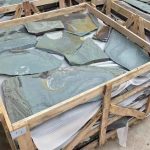Introduction
Cultured stone, also known as manufactured stone or faux stone, has become an increasingly popular building material due to its versatility, cost-effectiveness, and aesthetic appeal. One of the key features that make cultured stone stand out is its texture, which replicates the look and feel of natural stone. In this article, we will delve into the world of cultured stone texture, exploring its various types, characteristics, and applications.
Types of Cultured Stone Texture
Cultured stone texture comes in a wide range of options, each offering unique visual and tactile qualities. Some of the most common types of cultured stone textures include:
1. Limestone Texture: Limestone textured cultured stone is designed to mimic the rough, porous surface of natural limestone. This texture is characterized by its irregular shape and earthy hues, making it a popular choice for rustic and traditional architectural styles.
2. Slate Texture: Slate textured cultured stone features the distinctive layered appearance of natural slate, with its rich colors and fine-grained texture. This texture is often used to create a modern and contemporary look in both interior and exterior applications.

3. Brick Texture: Brick textured cultured stone replicates the classic look of traditional brickwork, complete with the rough, uneven surface and warm, earthy tones. This texture is ideal for adding a touch of old-world charm to any building or landscape.
4. River Rock Texture: River rock textured cultured stone captures the smooth, rounded shapes and varied colors of natural river rocks. This texture adds a sense of tranquility and natural beauty to any space, making it a popular choice for outdoor features like fireplaces and water features.
5. Weathered Texture: Weathered textured cultured stone simulates the worn and weathered appearance of aged stone, with its faded colors and rough texture. This texture is perfect for creating a sense of history and character in architectural designs.
Characteristics of Cultured Stone Texture
In addition to its visual appeal, cultured stone texture offers a range of practical benefits that make it a popular choice for builders and homeowners alike. Some of the key characteristics of cultured stone texture include:
1. Durability: Cultured stone texture is made from high-quality materials that are engineered to withstand the elements and maintain their appearance over time. This durability makes cultured stone an excellent long-term investment for both residential and commercial projects.
2. Versatility: Cultured stone texture is available in a wide range of styles, colors, and shapes, allowing for endless design possibilities. Whether you are looking to create a traditional, modern, or rustic look, there is a cultured stone texture to suit your needs.
3. Easy Installation: Cultured stone texture is lightweight and easy to install, making it a cost-effective alternative to natural stone. With the right tools and techniques, cultured stone can be applied to virtually any surface, from exterior walls to interior accents.
4. Low Maintenance: Cultured stone texture requires minimal maintenance to keep it looking its best. Unlike natural stone, which may need to be sealed or treated regularly, cultured stone is designed to be low-maintenance and hassle-free.
Applications of Cultured Stone Texture
Cultured stone texture can be used in a wide variety of applications, both indoors and outdoors, to enhance the beauty and functionality of any space. Some popular uses of cultured stone texture include:
1. Exterior Cladding: Cultured stone texture is often used as a decorative cladding material for exterior walls, giving buildings a timeless and elegant look. Whether Stepping stone circles for focal points prefer the rustic charm of limestone or the sleek sophistication of slate, there is a cultured stone texture to suit your architectural style.
2. Interior Accent Walls: Cultured stone texture can also be used to create stunning accent walls in interior spaces, such as living rooms, kitchens, and bathrooms. The unique textures and colors of cultured stone can add warmth, depth, and character to any room.
3. Fireplaces and Chimneys: Cultured stone texture is a popular choice for creating beautiful and functional fireplaces and chimneys. Whether you prefer the classic look of brick or the natural beauty of river rock, cultured stone can help you create a cozy and inviting focal point in your home.
4. Landscaping Features: Cultured stone texture is an excellent choice for adding visual interest and texture to outdoor landscaping features, such as retaining walls, pathways, and garden borders. The durability and weather resistance of cultured stone make it ideal for enhancing the beauty of outdoor spaces.
Conclusion
Cultured stone texture offers a perfect blend of beauty, durability, and versatility, making it a popular choice for a wide range of architectural and design applications. Whether you are looking to create a traditional, modern, or rustic look, there is a cultured stone texture to suit your needs. By exploring the various types, characteristics, and applications of cultured stone texture, you can discover the endless possibilities that this versatile building material has to offer.
